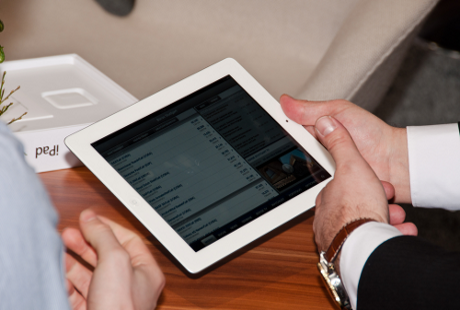Eight out ten companies listed in the Fortune 100 index are deploying or piloting iPads, Apple said yesterday.
“Today, over 80% of the Fortune 100 are already deploying or piloting iPad, up from 65% in the [previous] quarter,” said CFO Peter Oppenheimer in a conference call with investment analysts yesterday. “Some recent examples include JPMorgan Chase, Cardinal Health, Wells Fargo, Archer Daniels Midland, Sears Holdings and DuPont.”
Interesting Links
iPads for partners – Many law firms are weighing up the pros and cons of giving tablet PCs to senior staff
Putting the iPad to work – How one furniture retailer has found a business use case for Apple’s tablet device
Apple’s smartphone device is also gaining enterprise adoption, the company said. “Enterprise customers continue to embrace iPhone, with 88 of the Fortune 100 companies and almost 60% of the Financial Times Europe 100 companies now testing or deploying iPhones,” Oppenheimer explained.
Chief operating officer Timothy Cook said that enterprise adoption of Apple’s mobile devices reflects a move away from standardising equipment towards catering to the personal requirements and tastes of individual employees.
“The most forward-looking CIOs are coming to the realisation that the productivity of the person, the creativity of the employees is materially more important than everyone using the same thing,” he said.
Apple made its claims as it announced its most recent financial results. The company made record sales of $26.7 billion in the three months ending 25 December 2010, and net profit of $6 billion. This was enough to counterbalance the fall in share price that followed Apple CEO Steve Jobs’ announcement that he is to take a leave of absence on health grounds.
In its technology predictions for 2011, accounting giant Deloitte said it expects "that in 2011 more than 25 percent of all tablet computers will be bought be enterprises". There are four drivers for this, it said: consumers finding that their tablet devices are useful for work and asking their employers to cover the cost; the utility of handheld devices in verticals such as retail and healthcare; enterprise software vendors launching tablet versions of their products and executives using tablets in the boardroom.










